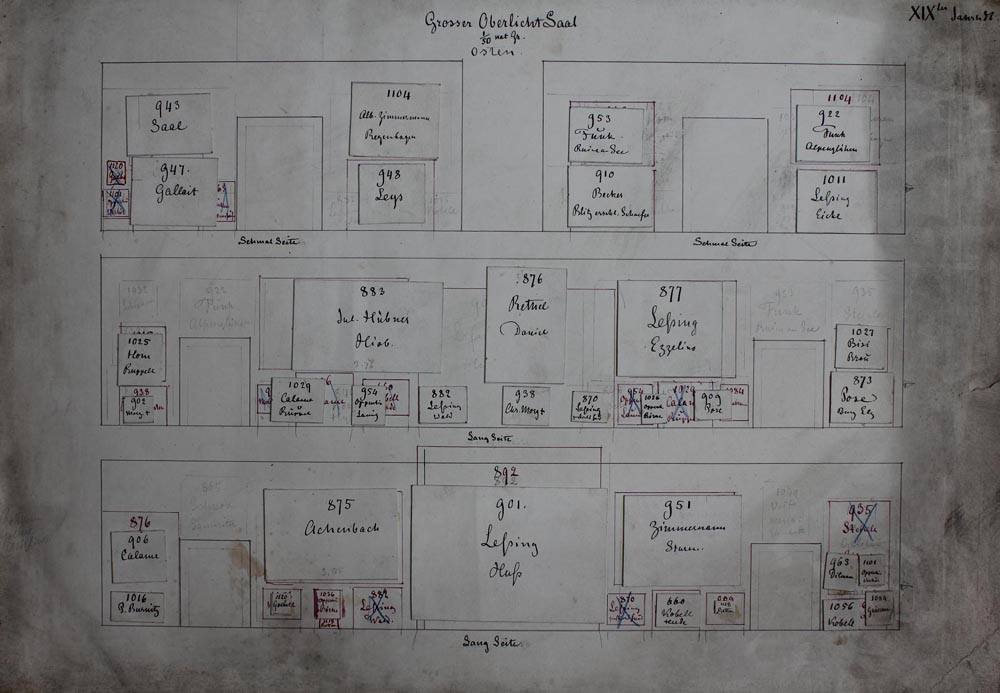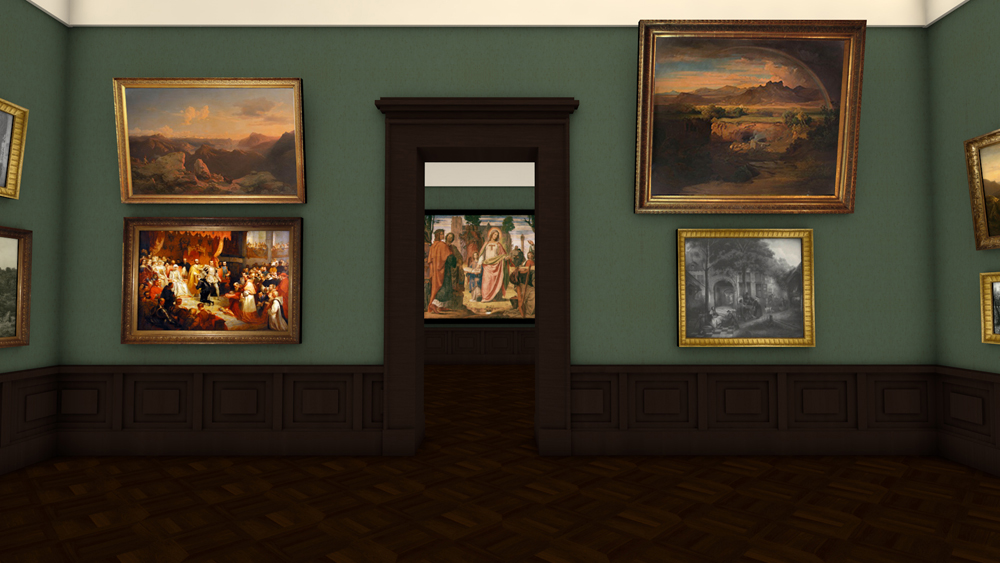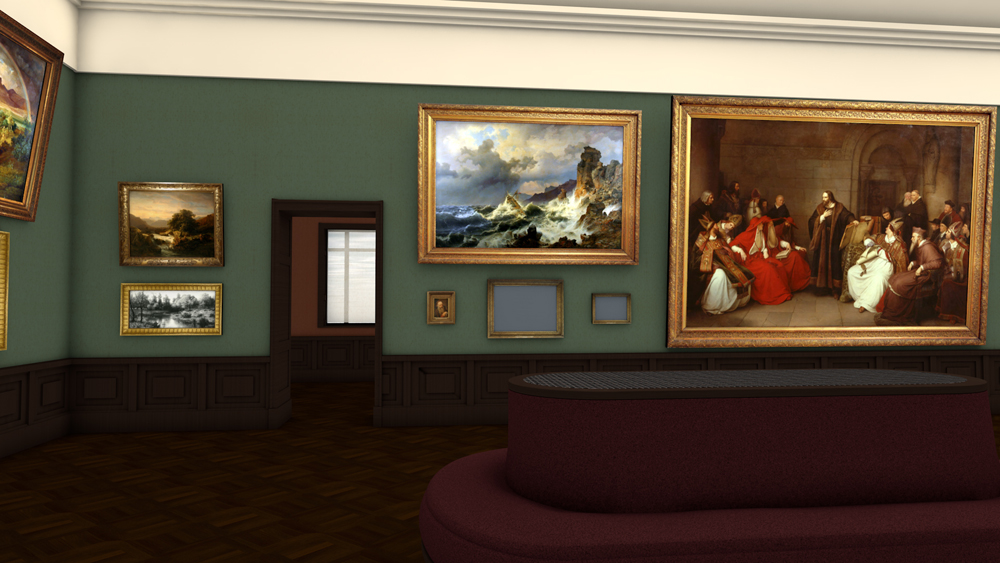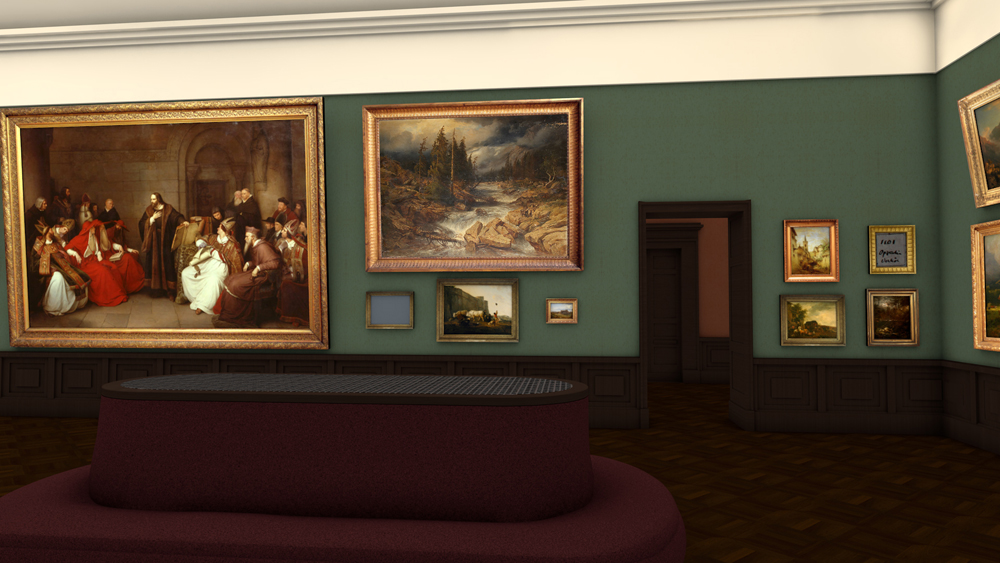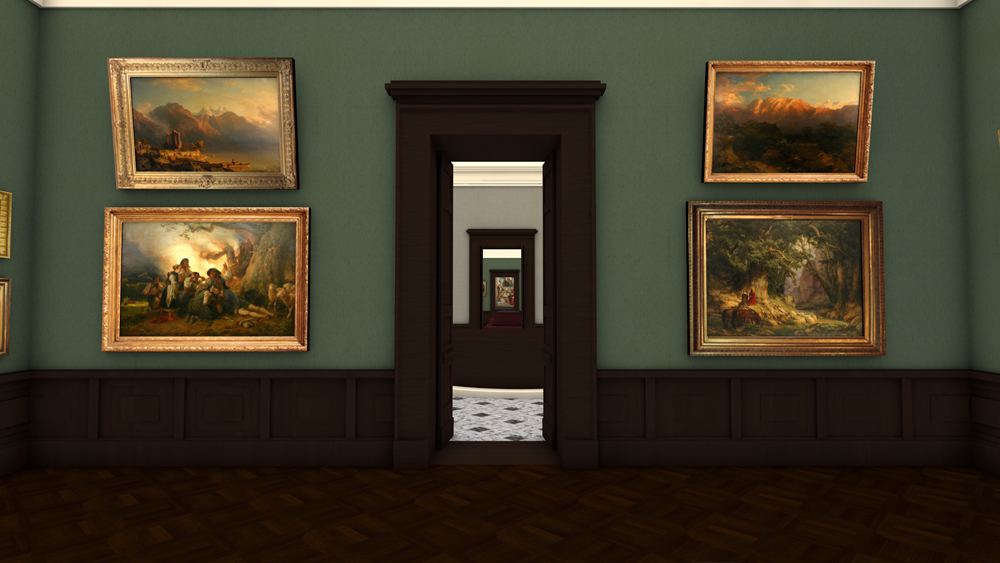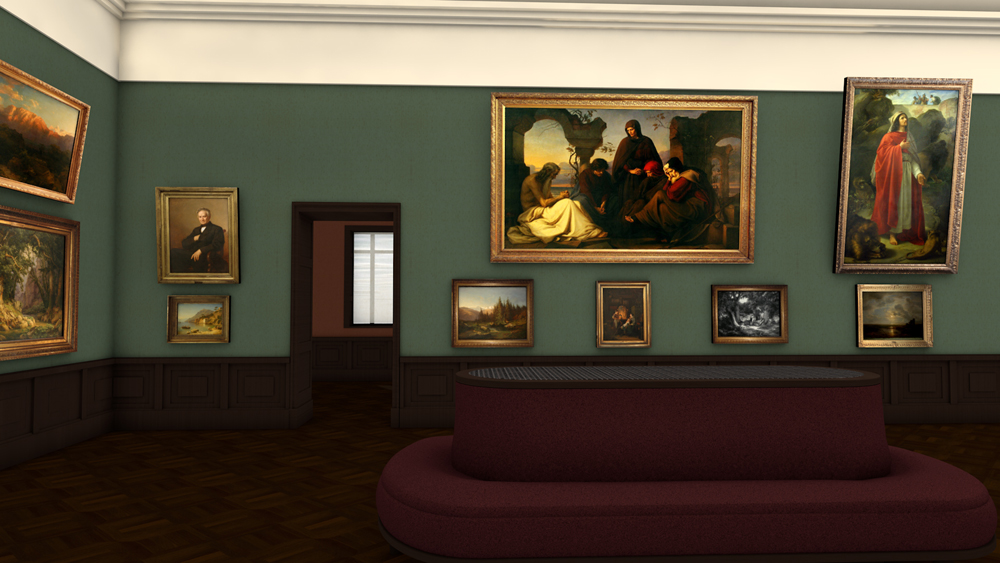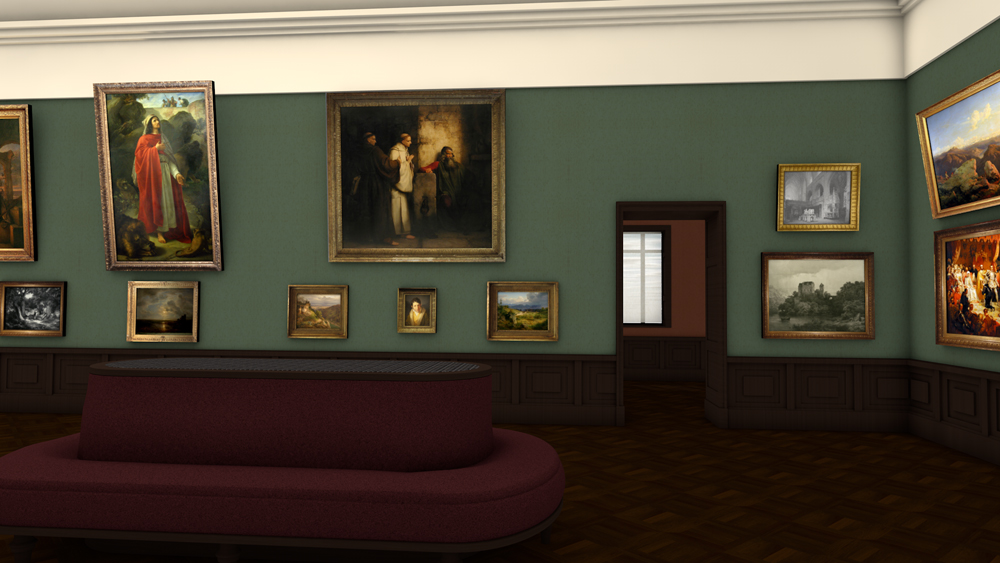1878 Large eastern skylight room
The room
of Lessing’s “Hus”
Like the works in the neighbouring “Veit room”, most of the paintings in the large eastern skylight room dated from before 1850. These works, however, presented an aesthetic and thematic alternative.
Instead of the ideals of the Italian Renaissance, understood to have been denominationally Catholic, a more northern monumentality, considered to be related to Protestantism, could be viewed here. This was especially visible on the southern main wall, where Carl Friedrich Lessing’s “Jan Hus in Constance” was flanked by two landscapes by Andreas Achenbach and Albert Zimmermann. Lessing and Achenbach were leading figures of the Düsseldorf School of painting, which combined the study of nature with dramatic stagings. The spatial arrangement of the School’s works as a contemporaneous counterpart to the “Rembrandt room” was highly significant as, formally, these later paintings drew a lot of inspiration from seventeenth-century Dutch painting. The later works, however, were greater in size – suitable for a museum, as many had been commissioned or directly bought from the artist’s studio (as was also the case with the works in the “Veit room”).
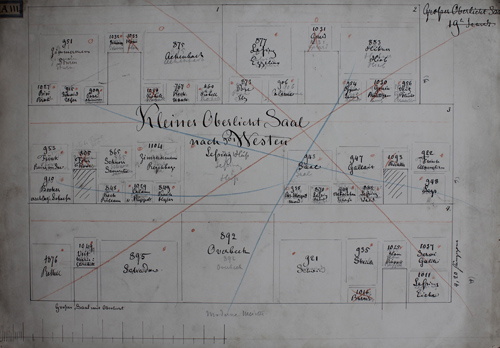
Basis
for the reconstruction
Based on the plans for the large eastern skylight room, three rejected planning phases can be identified.
A first hanging plan was completely abandoned. A second plan, drawn with pencil, was altered with violet ink and subsequently covered with cut-out paper placeholders with labels written in black. This version, however, features a number of contradictions; one painting is even included twice.
Due to a lack of alternatives, we have nevertheless visualised this final planning phase. Yet, we are aware of the fact that this plan most likely merely constituted a draft.
It is for example improbable that one of the collection’s most prominent works would not have been exhibited at the time of the opening in 1878: in an earlier planning phase, Friedrich Overbeck’s “The Triumph of Religion in the Arts” (inv.-no. 892) had been planned to form a counterpart to Lessing’s “Hus” in the large skylight room, thereby mixing Nazarene and “realist” art. The floor plan included in the Directory of 1879 features the names of Overbeck and Schadow in the corner rooms. It is therefore worth considering, whether it was Oberbeck’s painting (and Schadow’s “Parable of the Wise and Foolish Virgins”) that might have been presented here, instead of the large cartoons – yet, in that case, where might these latter works have been situated?
